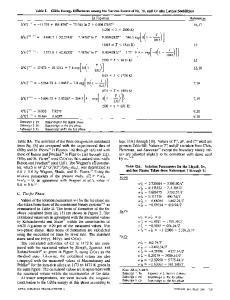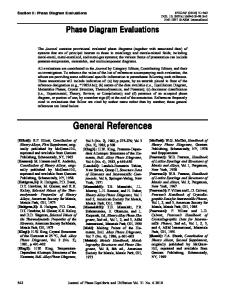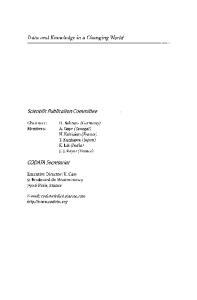A Band Structure Phase Diagram Calculation of 2D BiSb Films
- PDF / 197,752 Bytes
- 6 Pages / 612 x 792 pts (letter) Page_size
- 94 Downloads / 363 Views
0886-F04-05.1
A Band Structure Phase Diagram Calculation of 2D BiSb Films Ming Y. Tang1 and Mildred S. Dresselhaus1,2 1 Department of Electrical Engineering and Computer Science, Massachusetts Institute of Technology, Cambridge, MA 02139, U.S.A. 2 Department of Physics, Massachusetts Institute of Technology, Cambridge, MA 02139, U.S.A. ABSTRACT Ever since the birth of thermoelectrics, it has been well known that semiconductors (materials with a relative small bandgap) give the best thermoelectric performance. From quantum mechanics, it is also well known that low dimension quantum confinement leads to changes in the band alignment of a material. Thus, a semimetallic material can be made semiconducting by using low dimensionality quantum confinement effects. BiSb alloys have been of particular interest for thermoelectric application in the temperature range of 70K to 100K. In bulk form, BiSb alloys can either be a semimetal or a semiconductor, depending on the alloy composition. Moreover, semimetallic BiSb alloys can be made semiconducting by using the low dimensionality quantum confinement concept. With these two previous concepts in mind, it is valuable to further explore the dependence of the band alignment for different alloy concentrations and different confinement conditions for BiSb alloys. Following the study of the effect of the Sb concentration and of the wire diameter on the semimetallic or semiconducting phase of BiSb alloy nanowires [1], we now examine the corresponding effect of the Sb concentration and the film thickness on the properties of BiSb alloy films. A band structure phase diagram is calculated, giving the details on the dependence of the relative band edge position on the film thickness and the Sb concentration. This phase diagram gives a first hand guideline for choosing the film thickness and the Sb concentration to better improve the thermoelectric performance of BiSb alloy films. INTRODUCTION In the 1990s, using low dimensional physics concepts, Hicks and Dresselhaus predicted that a dramatic enhancement in thermoelectric performance was possible through the use of quantum wells and quantum wires [2, 3]. In the late 1990s, Chen also predicted that an enhancement in ZT could result from the significant reduction in the thermal conductivity in a low dimensional system [4]. At the same time, nano-fabrication technology rapidly improved during the last decade. With advances in technology and in new low dimensional concepts, increases in the thermoelectric figure of merit ( ZT = S 2σ T /(κ e + κ ph ) where σ is the electrical conductivity, S is the Seebeck coefficient, κ e and κ ph are respectively the electrical and lattice thermal conductivity, and T is the temperature) have been demonstrated [5]. Refrigeration is one of the major applications for thermoelectric materials. The advantage of thermoelectric refrigeration is the absence of moving compressor units as is done using conventional refrigerators. Thermoelectrics not only decrease the noise level and the weight of the refrigerator, th
Data Loading...











